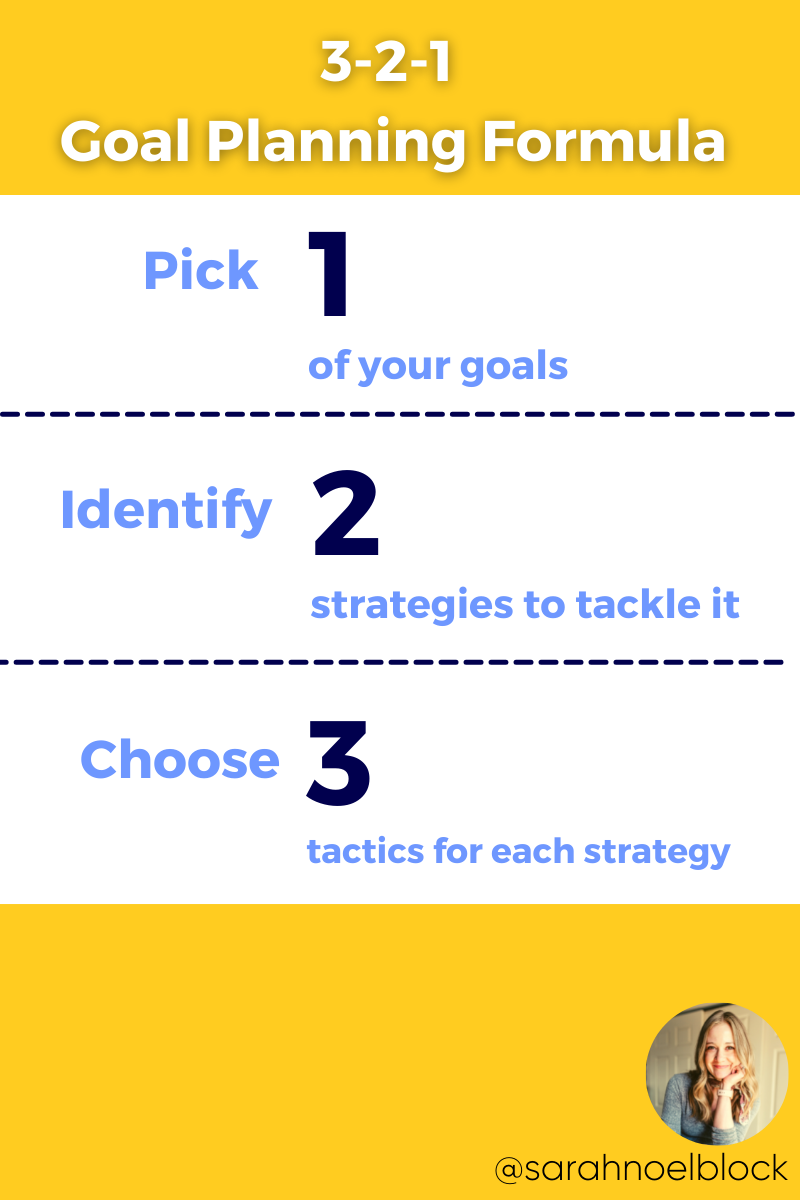5 Steps to Building a Marketing Team Without Increasing Your HeadCount
Are you a marketing team of one?
It can be overwhelming to be on your own, and reaching your marketing goals may feel like an impossible task. However, building a supportive marketing team doesn't have to be expensive or time-consuming — if you follow the proper steps.
In this post, we'll walk through five steps that I have personally used as a one-person marketing department to build a successful marketing team without increasing headcount.
Let's get started!
Step 1) Start with Strategy
Begin with your annual marketing strategy. What big hairy audacious goals (BHAGs) have you set for the year? Start there.
First, choose one of those goals. Second, identify two strategies you can use to try and tackle this goal. Third, choose three tactics to address each strategy. Fourth, write a list of the support you need to manage these tactics (people, technology, leadership buy-in).
Let's look at going through this scenario IRL.
Goal: My goal is to increase leads among landlords.
Strategies:
Strategy A - Ramp up lead generation.
Strategy B - Build an online community for landlords.
Tactics:
Strategy A
Create a Webinar Series
Add a Sales Email Campaign
Paid Media
Strategy B
Choose a platform for the online community.
Create a community management guideline.
Promote the community through guest podcast spots.
Support:
Webinar management: webinar tool
Landing pages: designer and copywriter
Speaker outreach: outreach manager, subject matter expert (SME)
Email marketing: designer, copywriter, email marketing platform
Social media: designer, copywriter, community manager
Online community: social media manager, community manager
Looking at this support list, you can see there is some overlap. For example, you need a designer, a copywriter, an SME, and a communications person to handle community management, outreach, and social media.
“To start leading others, you have to lead yourself first. Be as organized as possible and get clear about the future vision for your department, your role, and your team members’ roles. When it comes to delegation and outsourcing, it's important to work with your natural strengths and create a strategy that works for you. There is no blueprint/playbook/ ’right way’ for efficient outsourcing; the process looks different for everyone. The more you can create an effective strategy that's aligned with your management style and marketing goals, the more successful you'll be at scaling your business and freeing up time,” Hanneke Antonelli, CTACC.
Step 2) Build Your Processes
Next, you want to build the processes that will keep your tasks on track, including the technology to streamline those processes.
Using the example above, you will need a project management tool like Trello, Asana, or ClickUp to manage a diverse internal and external team. In addition, you will need a communication tool that makes communicating with all parties involved in your projects seamless. Finally, you will want to build a workflow that clarifies which people and tools are involved in each step to facilitate streamlined hand-offs between each step.
Step 3) Expand to Include Outsourced Teams
Take a look at your needs. Do you need to hire external people to own parts of the workflow?
When deciding if you should outsource to a contractor or hire internally, ask yourself these questions:
Is my need for this job inconsistent or varying?
Do I need an expert who would be too expensive to hire internally?
Is my budget too small to hire internally?
Is there less red tape to hire a contractor?
Do I need someone who can be the expert?
If you answered yes to these questions, hire a contractor.
For this example, look at the support you need: copywriter, designer, SME, and communications manager. Now, ask yourself the questions above.
Would you hire internally or externally?
"Don't be too scared to take the leap and make the hire or buy the tool or whatever it is that will make it easier to reach your goals. It's always scary at first because it feels like it will be more money or effort or time than you have, but that's usually what getting to the next level requires. Once you have the new person (or tool, etc) on board you'll quickly see how much better and faster you're able to achieve the things you are working toward and it's so worth it,” Alessandra Pollina, CEO of Quotable Media.
Step 4) Add Talent from Within
Even if you don't have the budget to expand your marketing department, you might have great resources to help you internally from other departments.
Here are my recommendations for getting support from internal talent.
Ask who has extra time and interest to take on additional tasks. For example, a sales assistant might have a skill for writing and could assist with copywriting needs.
When seeking subject matter experts, look internally first. I bet you have some intelligent people who could use a spotlight. Look to your sales, project management, and engineering teams for expertise.
Amplify your brand reach on social media by working with employees. Build a program that encourages them to share company news and content.
Already existing employees are often an overlooked resource. You might have some talent and amplification resources right under your nose.
Step 5) Invest in Technology
Choose practical and efficient technology that will move your goals forward. For example, you might find that the right technology will reduce processes by hours, saving you time and money.
For one-person marketing departments, I recommend starting with these tools to streamline your workflows.
Marketing automation platform: A tool like Hubspot can handle email marketing, social media marketing, landing pages, campaign tracking, sales, and so much more. For a small team, you'll likely benefit from an all-in-one platform like this.
Project management tool: Choose a tool that works for internal and external team members. You can manage all projects in one place and streamline workflows.
Communication tool: If you don't have a communication tool like Teams or Google Chat, consider using Slack. A communication tool makes it easy for all parties to communicate more efficiently.
With the right tech stack, you get a streamlined workflow that will save you oodles of time.
Conclusion
Being a marketing team of one may feel overwhelming, but you have an exciting opportunity ahead of you. As you grow and expand your team, you get to build it from scratch. By following these five steps, you can develop a custom team that meets your needs and budget.
Do you want to expand your department without increasing your headcount? Then, work with Sarah to create one month of content in one week. Click here.


